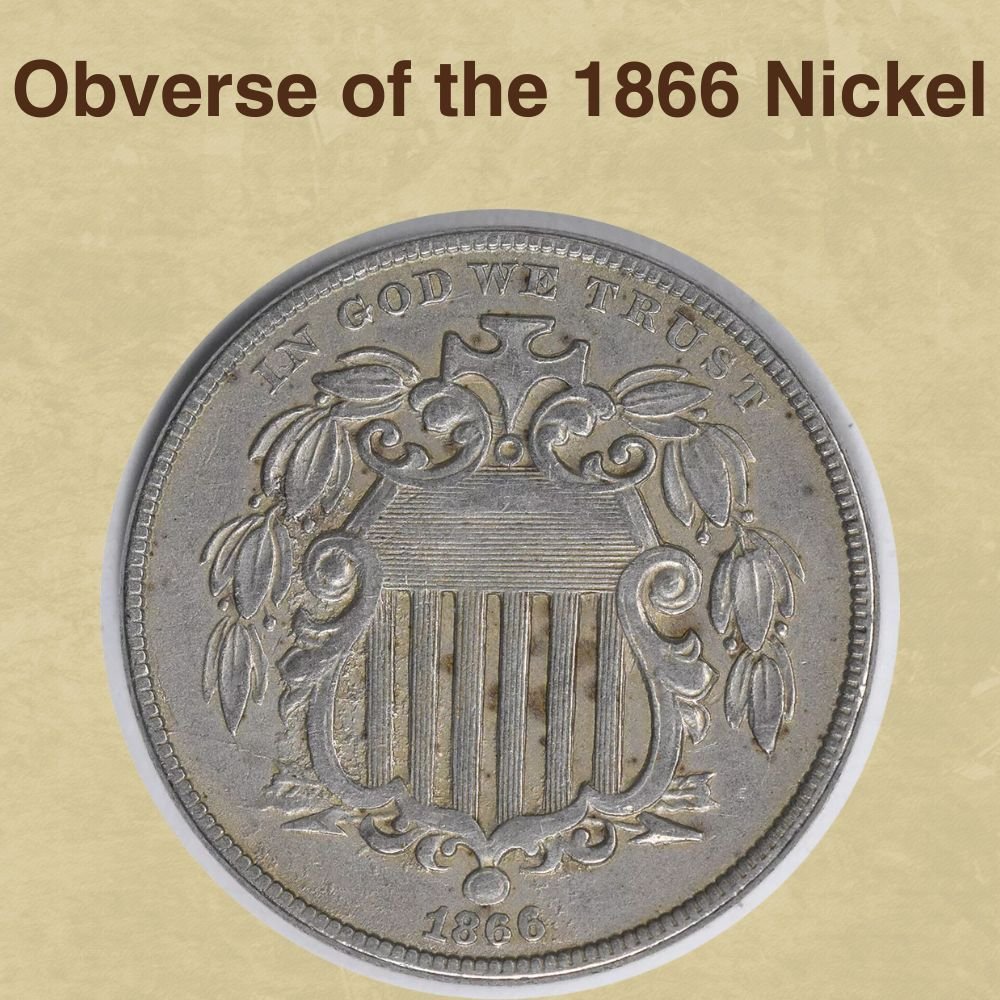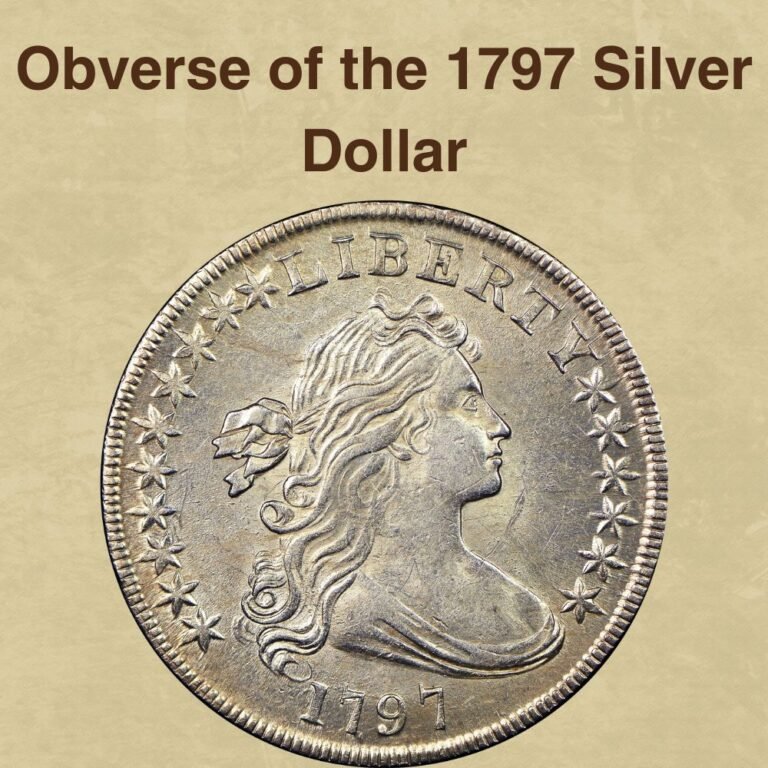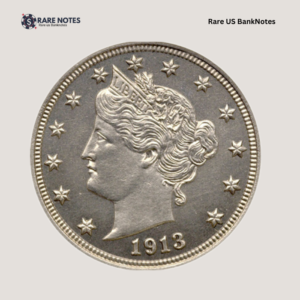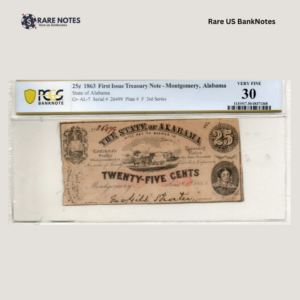Are you interested in collecting Shield Nickels? You are probably curious about the first one in the series, the 1866 nickel. What is the 1866 nickel value? Is the coin worth collecting? This guide will answer these questions and more about this historic coin.
The 1866 Shield Nickel is not particularly scarce—it actually had a pretty high mintage. But, what makes it fascinating is that it is the only one of its kind to have the so-called “rays” on the reverse design, after which the rays were removed from subsequent Shield Nickels.
The design peculiarity and the fact that it was the first to be minted in the Shield nickel series led to widespread hoarding of the 1866 nickel. As a result, you might find it pleasantly easy to add Mint State examples and Gems to your collection.
So, without further ado, let’s find out: How much is an 1866 nickel worth?
1866 Half Dollar Value Chart |
||||
| Mint Mark | Good | Fine | Extremely Fine | Uncirculated |
| 1866-No Mint Mark Nickel Value | $45 | $100 | $200 | $4000 |
History of the 1866 Nickel
The 1866 nickel is part of the Shield Nickel series, the first five-cent piece in the history of United States coinage to be struck out of copper-nickel and was also the first coin to be referred to as a nickel.
The first five-cent pieces were struck as early as 1792 and were made out of silver. However, after the Civil War, the majority of American coins disappeared from circulation. In 1864, in an effort to restore coins into circulation, Congress authorized the Mint to strike low-intrinsic value coins such as the two-cent, three-cent pieces and even five-cent notes.
Mint Director, James Pollock had been against using nickel to strike circulating coins but given how successful the three-cent copper-nickel piece had been, he proposed that the same alloy be used to strike a five-cent piece to replace the five-cent note. So, Pollock drafted a bill authorizing the introduction of a five-cent coin struck in a copper-nickel alloy. The bill passed in Congress in May 1866, allowing the five-cent nickel to become legal tender.
In preparing designs for the new five-cent nickel, Chief Engraver, James Longacre, repurposed the two-cent piece design he had prepared earlier. However, due to the planchet’s hardness, the new coins were quite difficult to produce, resulting in low quality coins and short die lives. This led to the design being slightly altered in 1867 to minimize some of the production difficulties, even though these modifications didn’t solve much.
High mintage dates of the Shield Nickel series, such as the 1866 nickel, are sought-after for their minting errors and die varieties. If you are building a Shield Nickel collection, the 1866 nickel is a key piece for a complete set, whether by type or date.
Also read: Top 10 Most Valuable Nickels Worth Money
Features of the 1866 Nickel
Familiarizing yourself with the physical attributes of the 1866 nickel will help with grading your coin. Knowing these standout features can also aid in identifying Shield Nickels worth money.
Obverse of the 1866 Nickel

The front side of the 1866 Shield Nickel shows a large shield, a weapon that represents self-defense and strength through the unity of the states.
The upper part of the shield features horizontal lines and represents the Congress while the lower part spots 13 vertical lines symbolic of the original states.
Two crossed bows protrude near the bottom and behind the shield and symbolize a readiness to defend the Union. There’s a cross at the top of the shield and laurel branches hang from both sides to represent victory.
The words IN GOD WE TRUST are etched at the top while the date, 1866, appears at the bottom.
Reverse of the 1866 Nickel

The reverse features a bold number “5” at the center of the coin surrounded by thirteen stars, which symbolize the original states to join the union.
Rays appear between each star, adding more appeal to the design. The Mint removed the rays in 1867 to eliminate some of the production issues the new coin faced.
The inscriptions, UNITED STATES OF AMERICA, are etched in an arch along the upper half of the coin while the coin’s denomination, CENTS, is shown at the bottom. Two periods on each side separate the two inscriptions.
Other Features of the 1866 Nickel
Additional notable features of the 1866 nickel include:
- Diameter:50 millimeters
- Weight: 1.94 grams
- Edge: Plain
- Metal Composition: 75% Copper, 25% Nickel
Also read: Top 17 Most Valuable Buffalo Nickel Worth Money
1866 Nickel Value Guides
So, how much is an 1866 Shield nickel worth? The value will depend on factors like the coin’s condition and rarity. Because these coins were minted in a rush and the dies had such short lifespans, many 1866 nickels show a poor strike quality. Your goal as a collector is to find nickels with as few flaws as possible.
As the Shield Nickels were only minted in Philadelphia, the only Mint at the time, there is only one variety of the 1866 nickel: the 1866 no-mintmark nickel. About 14,742,500 nickels were minted in 1866.
Let’s look at how much this coin is worth across different grades.
- Circulated Examples: These are plentiful and accessible to most collectors. Their historic status adds to their appeal, so even lower grade examples are worth significantly more than face value. For example, a nickel graded Poor/Average will sell for as much as $27.50, a Good (G) at $45, and a Fine (F) one at $100. Examples graded Extremely Fine (XF) are rare and will fetch up to $200 while an About Uncirculated (AU58) piece will sell for up to $400.
- Mint State Examples: Uncirculated pieces are common in lower grades and Gems are also accessible, mostly due to the widespread hoarding of these new nickels. These coins will command a premium across all grades. At MS60, examples will sell for as much as $500, for $625 at MS63, and as much as $950 for pieces graded MS64. Gems graded MS65 will command as much as $1650 and up to $4,000 or more for the rare MS66. Keep in mind though, that due to the many production problems, even Mint State and Gem 1866 nickels show some minting flaws and are not completely perfect.
- Auction Record: In a record-shattering sale, the Legend Rare Coin Auctions sold an MS66+ for a remarkable $17, 038, making this the most valuable 1866 Shield Nickel to date.
Also read: Top 17 Most Valuable Jefferson Nickels Worth Money
1866 Nickel Grading

Grading an 1866 nickel entails assessing the coin’s condition by paying attention to the obverse and reverse design. Key grading points on the obverse include the horizontal and vertical lines on the shield, while on the reverse, the digits, stars and rays significantly contribute toward the coin’s grade.
In lower grades, your 1866 nickel will show heavy wear. The vertical and horizontal lines will be smooth and the shield outline will be almost invisible. On the reverse, the stars, rays and 5 will also display heavy smoothness and wear.
Mid-grade coins will have only moderate wear. Most of the details, including the shield outline, lines, laurel leaves, and arrows will be visible. The reverse design elements including the number “5”, rays, and stars will also show strong details.
Finally, Mint State or uncirculated examples are the most desirable when collecting 1866 nickels. Pieces will show no signs of wear, except for small bag or contact marks. The surface will display full luster and strong details on the obverse and reverse.
When grading 1866 nickels, keep in mind that many of the early Shield Nickels, were poorly struck and can show weak details even in higher grades.
Rare 1866 Nickel Errors List
Because numerous dies were used to strike the Shield Nickels, many minting errors show up in this coin series. Of course, not all errors are worth money but some can boost your nickel’s value and are worth adding to your collection.
Here are some notable errors to watch out for:
1. 1866 Nickel Re-Punched Date Error

Re-punched date errors are some of the most common in the Shield Nickel series. This minting flaw happens when the date is struck more than once, resulting in an overlap between the secondary and primary strike.
A re-punch error usually occurs when mint workers try correcting the first strike by striking a second or third time. In this case, mistakes in striking the date the first time may have caused workers to re-strike the date multiple times resulting in a visible overlap between the various strikes.
Depending on the strength of the overlap, a re-punched date error can increase the value of your 1866 nickel by $50-$100.
2. 1866 Nickel Doubled Die Error

A doubled die error occurs when the die strikes the planchet at slightly different angles multiple times, resulting in visible doubling on the devices and/or inscriptions. This error often occurs due to a misalignment between the die and planchet.
The value of a doubled die error largely depends on the strength of doubling. Coins with strong doubling are appealing and will usually be worth more. Expect anything from $50 to $100 on top of the regular value of your 1866 nickel value for a doubled die error.
3. 1866 Nickel Rotated Die Error
The next error is the rotated die, which as the name implies, is the result of an offset between the obverse and reverse die.
The accidental rotation of the dies can result in the obverse design being rotated at an angle while the reverse design remains upright, or vice-versa.
The value of a rotated die error depends on the extent of the misalignment or offset. For example, a 50-degree rotation would generally be more appealing and valuable than a 10-degree rotation.
A rotated die error can boost the value of your nickel by $50-$150 depending on the degree of rotation.
4. 1866 Nickel Die Crack Error

Die cracks are also common on Shield Nickels and the die breakages is one of the reasons why mint workers used multiple dies to strike the nickels.
Die crack errors appear as raised lines on the coin’s surface. They are created when cracks form on the die’s surface and are filled with small metal pieces as the die continues to be put to use. Eventually, the metal filled cracks leave their impression on the coin’s surface, resulting in one or multiple die crack errors on the coin.
Factors such as the size, appearance and positioning influence the value of a die crack error. As a general rule, large, peculiar die cracks are more appealing and will fetch more than small, subtle errors. A die crack error can bring in $20-$150 or more, significantly adding to your 1866 nickel value.
Also read: 14 Most Valuable Nickel Errors Worth Money
Where to Sell Your 1866 Nickel?
Now that you know the value of your coins, do you know where to sell those coins online easily? Don’t worry, I’ve compiled a list of these sites, including their introduction, pros, and cons.
Check out now: Best Places To Sell Coins Online (Pros & Cons)
FAQS
What is the value of an 1866 Shield Nickel?
The value of an 1866 Shield nickel largely depends on its condition. Generally, lower grade circulated pieces will fetch up to $30 while uncirculated gems can sell for millions. If you are unsure about the worth of you nickel you can consult with a professional coin grading service to authenticate the grade and value of your coin.
How do I know if my 1866 nickel is valuable?
You can tell an 1866 nickel is valuable by looking at its condition. If most of the design details are intact, the luster is brilliant, and there aren’t extensive signs of wear and damage, the coin could be a Mint State example worth good money.
How rare is an 1866 nickel?
With about 14 million minted, the 1866 nickel had a relatively high mintage. These coins are common in circulated state but survivors are poorly struck and heavily worn. Mint State examples and Gems are also not rare because collectors hoarded this coin. Being the first Shield Nickel to be minted and the only one with “rays” on the reverse, collectors felt that the 1866 nickel could be worth a fortune in the future.
The post 1866 Nickel Coin Value: How Much Is It Worth Today? appeared first on CoinValueChecker.com.
 The Store Opens Today 09 Am - 6 Pm
The Store Opens Today 09 Am - 6 Pm














